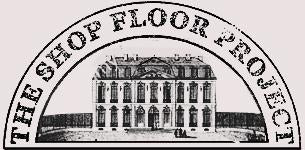The Breakfast Table | Rebecca Brown


Dennis Severs’ House is a gem of early 18th century London architecture. Built in 1724 and saved from dereliction by the Spitalfields Trust, Dennis Severs reconfigured it in the 1970’s to tell the story of an imaginary Huguenot family who had lived there since it was built in 1724.

The remarkable thing about the house is that it is set out as if the family has just left for the day, with surprising and humourous details at every turn.
 (Dennis Severs’ Kitchen: Photography by Lucinda Douglas-Menzies)
(Dennis Severs’ Kitchen: Photography by Lucinda Douglas-Menzies)


It was on a recent visit to the house, and seeing the kitchen table (above), set for breakfast by candlelight, that led us to commission the ceramicists Fliff Carr and Rebecca Brown to create a special collection for a late winter, early spring breakfast table.

Rebecca Brown initially studied Textile and Surface Design at Gray’s School of Art in 2010, before going on to study for a Masters in Illustration at Edinburgh College of Art in 2014. After graduating Rebecca moved from Inverness to Sheffield to join the Ceramic Starter Studio at Yorkshire Artspace.

Working in porcelain and stoneware, Rebecca combines drawing, painting and printmaking to build narrative on the surface of decorative hand built ceramics. Fingerprints, brush strokes and making marks are intentionally left exposed to accentuate the relationship between vessel and subject.

Rebecca's wonderfully playful animal pots have their roots in early 18th century European pottery. The Ginger Cat above has such a presence, it could almost be alive, and the Blue Cat Pot (below) sits like an ancient, giant, cat-shaped pebble.

The plump pigeon pots, characterful cats and resting rabbits are inspired by pieces from the Chelsea Porcelain Factory which were produced around the early to mid 1700's and designed 'to animate the table and celebrate the possibilities of clay'.

Rabbit Tureen, Chelsea Porcelain factory, Chelsea, ca. 1755. Victoria & Albert Museum: 414:328/1, 2-1885
These works were the largest pieces ever made to date in porcelain at the Chelsea factory and in the original 1755 sales catalogue for the piece above it was described as: 'a beautiful tureen in the form of a rabbit as large as life, and a fine dish to ditto’,

Chicken Tureen, Chelsea Porcelain factory, Chelsea, ca. 1755. Victoria & Albert Museum: C.75 to B-1946
Rebecca continues this tradition, sculpting in stoneware with various glazes. The colouring on the pigeons is so beautiful, with all the colours seen in a feather, beautifully recreated in oxides.


Hand-building the Pigeon Pots

Glazes drying after the bisque-firing stage.

A perfect pot for holding eggs...

Rebecca's brilliant Butter Birds are the perfect design. When closed they look like a bird nesting, but when the lid is lifted, the wide base transforms into a flying bird. Just a wonderful design.

These blue and white 'Butter Birds' also follow in the 18th century craze for animals in butter dish form; this example (below) is a tin-glazed earthenware Tortoise Butter Dish from 1755.

Butter Dish in the form of tortoise, German Ca. 1755, Germany, Victoria & Albert Museum C.78&A-1950

Here are a pair of Butter Birds about to take a nibble out of pastry on one of Fliff Carr's beautiful plates.


